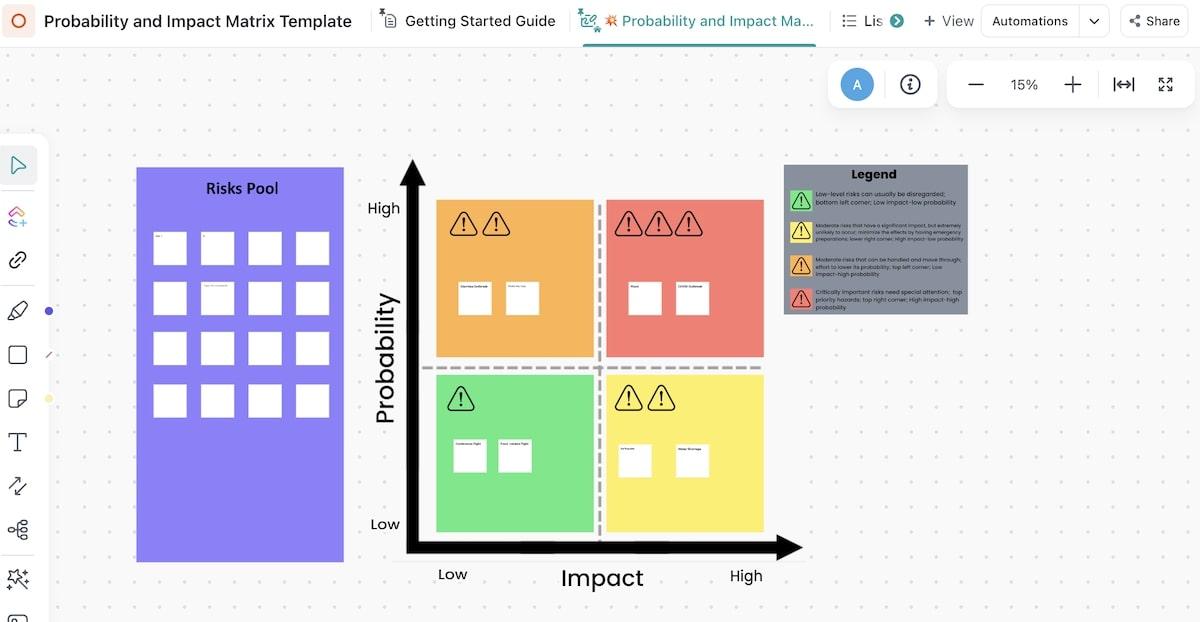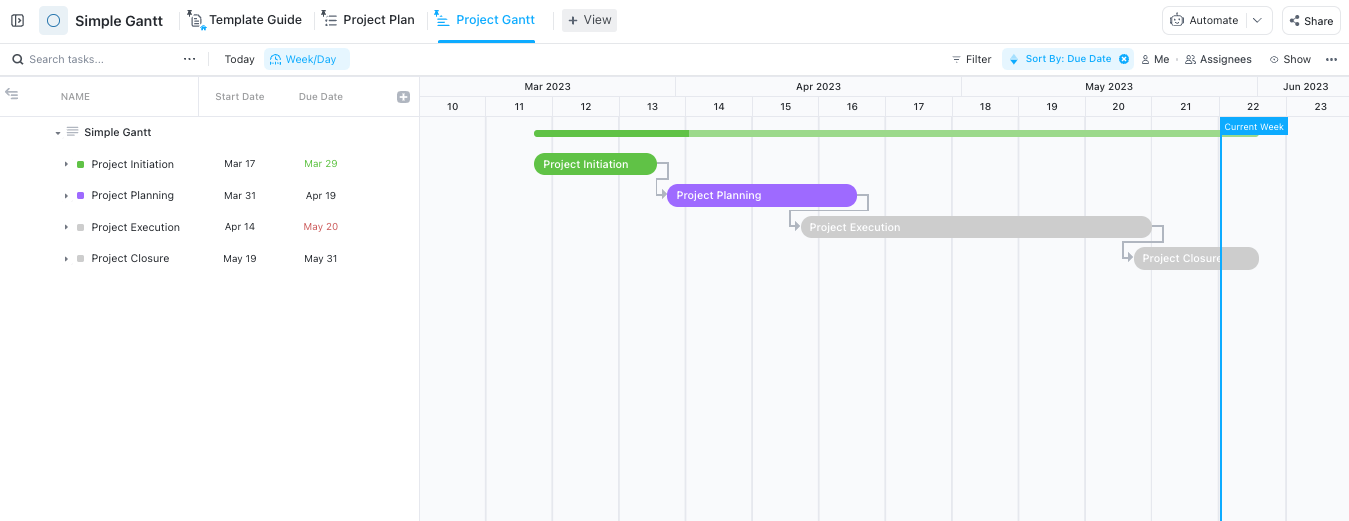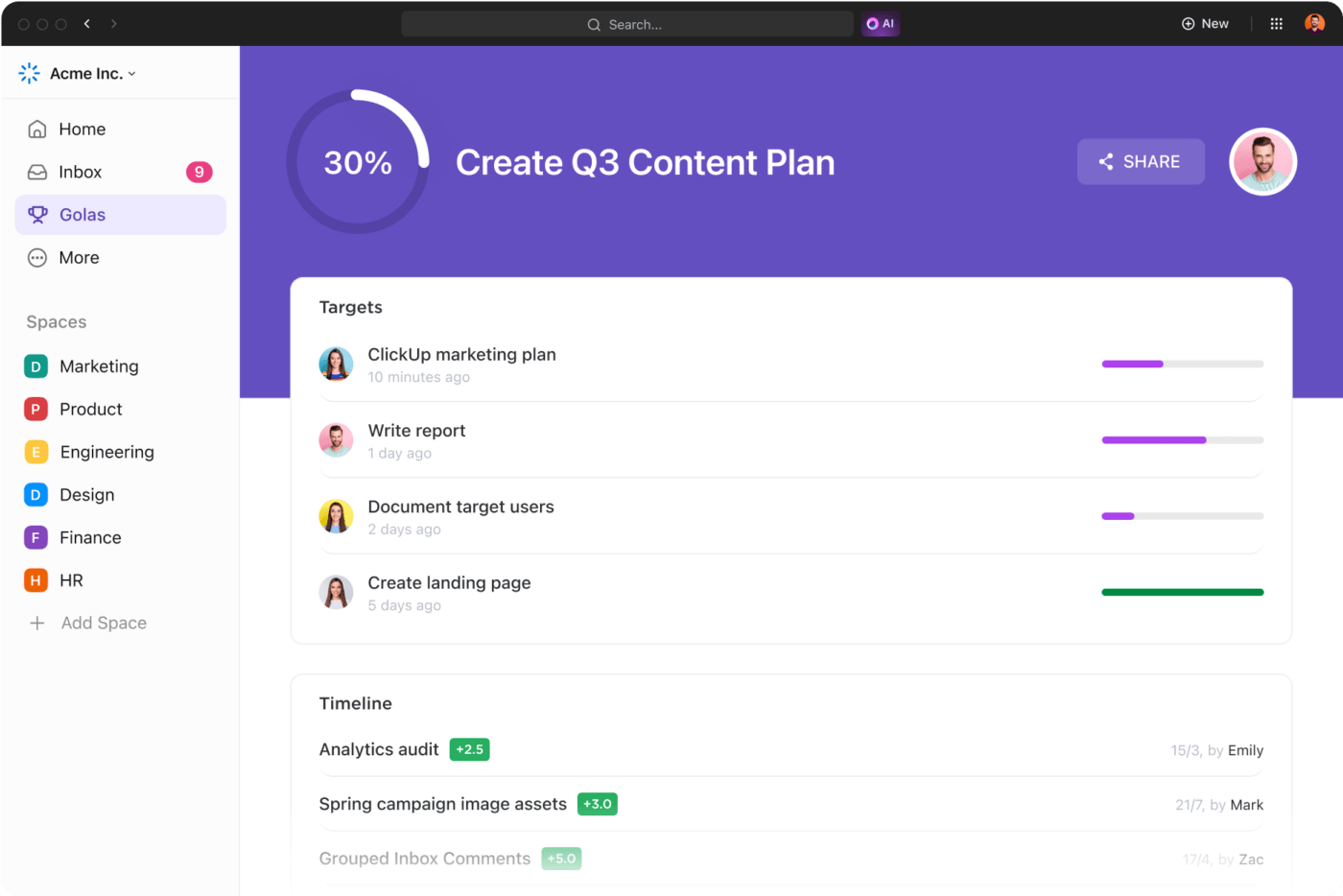

From something as simple as choosing what to wear for work to as complex as what business strategy to implement to achieve a competitive advantage, making decisions is an integral part of our everyday lives. The human brain is wired in such a way that we make many of these choices subconsciously, without even being aware of it! 🧠
However, not all decisions are (or should be) made subconsciously—sometimes, they result from proper thought, analysis, and planning. In such situations, a structured decision-making approach is necessary to make the right calls or have a winning strategy.
That structured approach to thinking and reasoning is what the term mental models is all about. In this all-encompassing article, we’ll introduce the 10 most well-known mental model examples and see how they can help you get your desired outcome at a certain point. We’ll also introduce you to a powerful productivity tool to help you implement any mental model in your personal and professional life.
What Are Mental Models?
In the simplest possible terms, mental models are thinking tools. They’re structured cognitive frameworks that allow a human being to critically and rationally analyze any situation or problem at hand and make informed decisions.
Think of a mental model as a simplified representation of reality that helps you process complex systems and information to solve problems efficiently.
A prominent thinker and Warren Buffett’s partner, Charlie Munger, was among the first proponents of mental models. He argued that until you see the facts hanging together through a “latticework of theory,” you can’t make sense of them. To overcome these blind spots, you must consciously develop and apply various mental models to the data and facts to comprehend them and understand your options in any given situation.
Keep in mind that certain mental models can also be negative and should be avoided. It’s human nature to develop the wrong mental routines during stressful situations—for example, a fight-or-flight response in the face of danger.
Now, let’s take a look at the 10 most prominent frameworks for interpreting information, understanding how the world works, and making the best possible decisions, every time!
10 Mental Models to Implement (or Avoid!) in Your Everyday Life
There are dozens of mental models that can help you make all types of decisions. But for the sake of brevity, we’ve hand-picked the 10 most prominent ones for improving your thinking and reasoning in both personal and professional realms.
We’ll also explore how ClickUp, a platform designed to improve work performance and get things done, can help you apply these mental models with its various project management and productivity features.
1. Baye’s theorem
Baye’s theorem tries to predict the possibility of any event or situation by analyzing the relevant and historical data and other situational factors that may lead to them. It’s the mathematical way of predicting an event’s probability rather than relying on assumptions, which are often incorrect or biased. Here’s what the Baye’s theorem formula looks like:

After you’ve evaluated the mathematical probability of multiple outcomes using Baye’s theorem, you can use ClickUp Whiteboards—ClickUp’s digital whiteboarding feature—to analyze the potential impact of each event.
If you’re not used to whiteboards, you can get a head start with the ClickUp Probability and Impact Matrix Template to plot the probability and impact of each outcome on an XY-plane for easy analysis. This can help you maintain realistic expectations and make informed decisions regardless of what the future holds.

2. Opportunity cost
There’s a cost to every decision we make in terms of the abandoned alternatives. The opportunity cost analysis provides insight into what you may be missing out on by selecting a particular option in a given situation. This understanding enables you to evaluate the comparative advantage of your choices in an impartial and unbiased manner.
You can quickly analyze opportunity costs of any choice with the ClickUp Gantt Chart view. Use it to build detailed visual roadmaps of each important aspect of your workload and easily identify the tasks that may get delayed or abandoned if you decide to take on additional work.
And since Gantt charts also visualize dependencies, you can get a clear picture of every activity that may be affected by a delay in the completion of any particular task.

3. Redundancy
You may already be familiar with this one—redundancy refers to having an extra quantity of some crucial resource (i.e., an additional machine or employee). It provides a backup plan if the essential resource you need breaks down before completing its intended job.
Here’s what it looks like—if you assess that you’ll need 10 people to manage a project, onboard 11-12. Ensure that the 10 members of the new team are experts in their respective fields, and that the other two have a general understanding of everything that goes into the project. Those two people can fill in if another team member falls sick, gets moved to another project, or leaves the team.
ClickUp’s built-in task management features can help you implement a redundancy mindset in your projects. With ClickUp Tasks, you can create multiple subtasks within each task and assign them to different team members. When a task is split between multiple team members, it becomes less dependent on a single individual for its completion, which is what redundancy is all about.
You can also add a priority level to each task and maintain a backup team for handling high-priority tasks in case the original assignees cannot complete them.

4. Backward chaining
If you tend to get bogged down in detail while pursuing a goal, a simple mental model called backward chaining might be just what you need. Instead of starting from step one and moving forward, backward chaining suggests that you kick things off with your end goal.
Start by jotting down all the steps necessary to complete a goal—but in reverse order. What would typically be the last step now tops your to-do list, while the nominally first step comes at the very end of the line.
While a forward-looking process may feel familiar and more intuitive, it can sometimes drown you in all the detail and individual steps that you lose sight of the big picture. In contrast, backward chaining always keeps your eyes on the prize. It also offers a vantage point to reach your goals more creatively and efficiently.

ClickUp can help you implement the backward chaining mental model with its native goal-tracking feature called ClickUp Goals. Use it to define a target you want to achieve, then break it down into tasks necessary for completing it. To work backward from your goal, rearrange the tasks in descending order with simple drag-and-drop actions.
5. Pareto principle (80/20 rule)
The Pareto principle claims that, in most cases, 80% of the effects come from just 20% of causes. Therefore, according to this rule, you should focus your resources and energy output on those activities that bring the most value.
If you’re running a business, ClickUp CRM can help you weave the Pareto principle into your workflows by allowing insights into the potential value of your customer interactions in real time. This helps you quickly identify high-value leads or customers who deserve the most attention and effort. You can also easily track the position of those leads and customers in your sales pipeline and see who is in charge of them under the “Assignee” section.

6. Law of diminishing returns (or diminishing marginal utility)
There’s a limit to everything, including the ability of an investment to generate returns. The returns will get more and more modest until they eventually turn zero or even harmful in some cases.
The law of diminishing returns tells us that rather than stressing over activities that bring progressively less value, we should focus our time, energy, and resources on opportunities that can generate new value.
To identify the efforts whose returns are starting to diminish, you should have a mechanism that allows a comparative study of returns over a period of time. Fortunately, you can use the ClickUp Dashboards feature to track and visualize the returns of all your investments with the help of line charts. 📊
For instance, if you want to analyze which of your sales channels are giving diminishing returns month-on-month, simply import the sales data of each channel for the last six months into ClickUp and visualize it using line charts on your Dashboard.
You can add separate charts for data for each sales channel and then easily spot which marketing channel’s ROI has been going down sequentially for months.

7. Margin of safety
While redundancy asks you to keep an extra supply as a precaution against potential failures or unavailability of vital resources, the margin of safety advocates for incorporating a buffer in your planning. This measure ensures your efforts are resilient and can withstand setbacks, thus reducing the risk of failure or, in the worst cases, a catastrophe. 🧨
There are different ways the margin of safety is implemented in different situations. For instance:
- While building public infrastructure (i.e., bridges, railroads, etc.), the maximum limits are set at a level that’s lower than the total capacity of the structure
- When setting project deadlines, savvy project managers leave some room for rescheduling or reassigning the tasks to another member in case someone falls sick
- When making financial plans, companies include some margin of safety in their sales and cost estimates
Unlocking the potential of this mental model depends on the art of forecasting. You can determine the margin of safety only by anticipating various outcomes through data analysis. ClickUp simplifies this process by offering a range of forecasting templates, including:
- ClickUp Sales Forecast Template
- ClickUp Project Cost Management Template
- ClickUp Demand Planning and KPI Tracking Template

8. Confirmation bias
Confirmation bias is the tendency to think and interpret situations in a way that adheres to our existing beliefs and ideas while rejecting everything that goes against them.
Under the influence of this negative mental model, we may discard all the data and scientific evidence that contradicts our preconceived notions and accept facts selectively to create an illusion of reality. Sometimes, people invent a rationale out of the blue to justify their views.
The solution to avoid this cognitive bias is two-fold:
- First is humility. You need to remind yourself that there are no universal truths constantly, and no matter how educated and informed you are, there’s still a lot you don’t know
- The second is to make data-driven decisions. Establish processes to collect and analyze data without flaws and then rely on that data in your decision-making
While the first part of the solution is more of a skill you need to practice, ClickUp can help you with the second part. ClickUp Dashboards can help you easily understand the patterns and trends hidden in your data with the help of visual elements known as cards.
While you can automatically track project data on team performance and finished tasks, you can also import data from external sources to visualize and analyze. With dozens of supported card types, you can choose a visualization that presents your data in the best possible way.

9. Preferential attachment
This mental model is somewhat at odds with the Pareto principle. While the latter suggests that you should focus on those 20% of actions that lead to 80% of results, the former advocates for the opposite approach.
The preferential attachment model claims that by allocating more resources to efforts already driving the majority of the results, you further amplify their ability to generate results while not giving other activities a fair chance to do the same.
So, how do you choose between these two approaches? Well, balance is the key. Before fully embracing the Pareto principle and dedicating your best efforts to a handful of leads or activities, ensure you allocate a fair amount of time, effort, and resources to test the potential of other revenue streams.
10. Hanlon’s Razor
Self-doubt is deeply ingrained in human nature. A good example is how managers and sales team leaders look for faults when they don’t close a potential deal or there’s radio silence from a promising lead in the negotiating stage. You might assume there’s something wrong with your sales process or with your product/service that made the lead back out. 🤔
While that may be true sometimes, it’s certainly not the case every single time. Leads might stop responding because they’re busy or testing the waters before making a financial commitment. That’s what Hanlon’s Razor tells us: Never attribute to malice what could be explained by carelessness.
ClickUp can help you determine whether your marketing qualified leads (MQLs) are dropping out due to some shortcomings on your part or because of their indecision or irresponsibility. By collecting conversion data from ClickUp CRM and analyzing it with ClickUp Dashboards, you can determine if there’s a consistent trend of leads dropping out or if these occurrences are just isolated incidents.
If there’s a trend, you need to figure out the reason(s) behind it and improve your product or marketing strategy. Sometimes, your strategy will be good, and you may have to optimize your processes instead. But if you’re faced with isolated facts here and there, don’t worry too much about them!
Implement Any Mental Model into Your Decision-Making with ClickUp
The mental models we’ve introduced can help you make smart moves and wiser choices. You can even make your own mental models—the key is to make sure that they use accurate data and logical theory to help make sense of something. Because when making crucial decisions, the last thing you want is to rely on guesswork.
ClickUp’s visualization, reporting, task management, and information organization features (i.e., dedicated project Spaces, Docs, multiple views, etc.) can help you discover elusive patterns or insights you can use to fully implement the best mental models into your everyday life and work.
Sign up for ClickUp today and unlock the doors to superior decision-making and problem-solving. You’ll thank us later! 💪


Questions? Comments? Visit our Help Center for support.